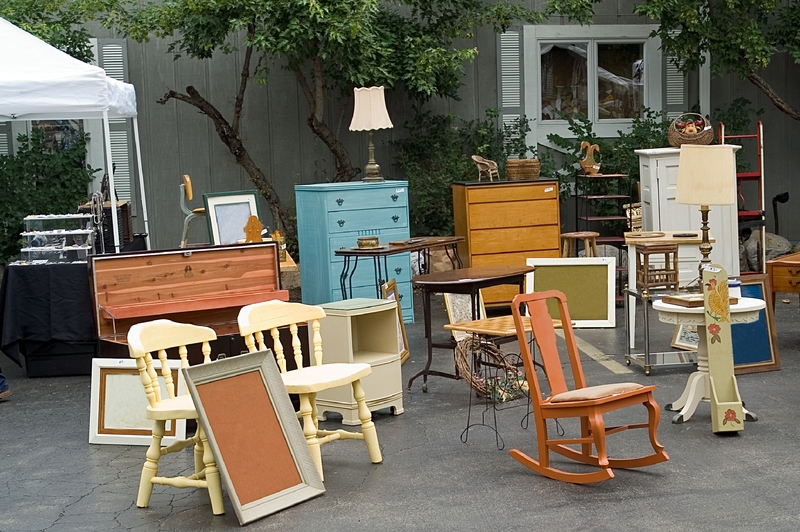How to Disassemble and Dispose of Large Furniture Safely
Disassembling and disposing of large furniture is a task that many homeowners, renters, and businesses encounter when moving, renovating, or decluttering. These bulky items often require more than just muscle; they need careful planning, the right tools, and proper knowledge of responsible disposal methods. In this comprehensive article, you'll discover step-by-step strategies to disassemble and dispose of large furniture safely, while keeping safety, environmental responsibility, and convenience in mind.
Why Proper Disassembly and Disposal Matter
Improper handling of big items can lead to injuries, property damage, and environmental harm. By learning how to break down furniture safely and dispose of it the right way, you not only protect yourself and your home but also support sustainability efforts. Many communities have strict regulations regarding bulk waste, so following the best practices covered here can help you avoid fines and unnecessary stress.
- Reduce Injury Risks: Heavy furniture can cause back injuries or crush fingers if not handled correctly.
- Prevent Property Damage: Disassembling large pieces minimizes scuffs, dents, and broken doors or walls.
- Support Recycling: Proper disposal ensures that reusable parts and materials don't end up in landfills unnecessarily.
- Stay Legally Compliant: Many cities penalize improper dumping of bulk items.

Essential Tools and Supplies for Disassembling Large Furniture
Before beginning any furniture disassembly project, gather these common tools and safety supplies:
- Screwdrivers: Both Phillips and flathead.
- Allen keys (Hex keys): Especially for IKEA and modular furniture.
- Wrenches and socket sets: For bolts and nuts.
- Hammer or rubber mallet: Useful for separating tight joints.
- Pliers: For pulling staples, nails, or hardware.
- Utility knife: For cutting upholstery or removing carpeted parts.
- Protective gloves and eyewear: Always protect your hands and eyes!
- Ziplock bags, labels, and a marker: To keep track of hardware.
- Moving blankets or cardboard: Protect your walls and floors.
Step-by-Step Guide: How to Disassemble Large Furniture Safely
1. Assess the Furniture
Before you begin, inspect the piece. Identify joints, screws, hidden fasteners, cables, or fragile components such as glass. Take photos if needed--these will help during reassembly or for selling/donating parts. Some large furniture, like sectional sofas or bunk beds, may have unique locking mechanisms or clips. Read any available manuals or search online for model-specific advice.
2. Clear an Open Workspace
Move the furniture to an open space with sufficient light and room to operate tools safely. Lay down a moving blanket or flattened cardboard to protect both the furniture and your floor. Remove obstacles in your path--doors, hallways, or other furniture that could restrict movement.
3. Remove Contents and Accessories
Completely empty all shelves, drawers, cushions, or accessories before starting. Loose objects can shift and cause accidents. Store or pack items separately.
4. Detach Removable Parts First
Look for and remove:
- Drawers, shelves, and bins from dressers or cabinets
- Removable sofa or chair legs
- Glass panels or doors (handle with utmost care)
- Pillows and seat cushions
5. Document Hardware Placement
As you take out bolts, screws, or hardware, place them in labeled Ziplock bags according to their part or step. Tape bags to the corresponding furniture sections or keep all bags in a marked box. Documenting this step makes any future reassembly or recycling easier.
6. Loosen and Remove Fasteners
Start at one end or corner and methodically unscrew or unbolt connectors. Use the correct screwdriver or wrench to avoid stripping hardware. For stubborn fasteners, try penetrating oil or gently tap with a rubber mallet to loosen.
7. Separate Sections Safely
When dismantling items such as bed frames, entertainment centers, or modular sofas, enlist a helper. Slide apart major panels or beams slowly to avoid tipping. If joints are stuck, wiggle gently--force can crack wood or warp metal.
8. Cut Upholstery and Mattresses (If Needed)
For items that cannot be disassembled further--like upholstered couches or mattresses--carefully cut fabric or batting away with a utility knife. This makes them flatter and easier to transport. Wear gloves to protect against springs, nails, or sharp frames.
9. Bundle and Organize Parts
Group wooden planks, metal rods, and panels by size. Tape sets together for easier carrying. Stack hardware in bags. The more organized your parts, the safer and simpler disposal or recycling becomes.
10. Clean Up Debris
Sweep or vacuum loose screws, staples, old padding, or wood splinters from your work area to reduce slip hazards.
How to Dispose of Large Furniture Responsibly
Disposing of bulky furniture goes beyond just dragging it to the curb. Many materials (like treated wood, foam, or metal) should be recycled or disposed of responsibly. Here's how:
1. Sell or Donate Usable Furniture Parts
If your furniture is still in usable condition, explore reuse options such as:
- Charity thrift stores (e.g., Habitat for Humanity ReStores, Salvation Army, Goodwill)
- Local shelters or schools needing furnishings
- Online marketplaces (Facebook Marketplace, Craigslist, Nextdoor)
- Giveaway networks like Freecycle
Donation not only helps others but also keeps large items out of landfills.
2. Recycle Dismantled Pieces
Check if your local recycling centers accept:
- Wood parts: Untreated wood may be chipped for mulch or fuel. Painted or treated wood can sometimes be recycled if separated.
- Metal frames or hardware: Scrap yards pay for aluminum, steel, or brass pieces.
- Glass panels: Must be intact and separated from frames.
- Foam and stuffing: Some centers accept padding for repurposing.
Search "furniture recycling near me" or check your city's waste management website for details.
3. Arrange for Bulk Waste Pickup
Many municipalities offer special collection days for bulk waste. Guidelines may require you to:
- Break down items to specified dimensions
- Remove glass or hazardous materials
- Label different materials for landfill or recycling
- Pay a pickup fee or schedule in advance
Bulk collection programs are among the safest and most convenient disposal options for large furniture.
4. Haul to a Landfill or Transfer Station
If no curbside service exists, transport dismantled furniture to an approved landfill or transfer station in your area. Some landfills have dedicated sections for wood, metal, or upholstery. Call ahead to confirm requirements and avoid rejected loads.
5. Use Professional Junk Removal Services
Hiring a junk removal company (e.g., 1-800-GOT-JUNK?) is ideal when you can't lift, transport, or break down large items yourself. These services specialize in safe removal, sorting for recycling, and legal disposal, but fees vary based on item size and location.
Furniture Disposal Safety Tips
- Lift with your legs, not your back. Use correct lifting techniques and work with a partner for heavier pieces.
- Protect your hands and eyes. Gloves and safety glasses are crucial, especially around nails, broken parts, or sharp metal.
- Mind your surroundings. Avoid tripping over disassembled sections or tools.
- Keep hardware and tools well organized. This prevents confusion, loss, and accidental puncture wounds.
- Don't overload yourself. Always slide or carry manageable loads; use a dolly or moving straps for long or heavy items.
- Follow building rules. Many apartments require booking elevators or reserved times for disposal of large items.
Frequently Asked Questions on Disposing Large Furniture
- Do I have to disassemble all furniture before disposal?
- Not always, but most disposal services, donation programs, or recycling centers prefer furniture to be broken down into manageable components. This makes pickup and processing safer and more efficient.
- Can I leave my old couch or mattress on the curb?
- Most cities require scheduling a bulk pickup or taking large items to a local drop-off center; curb dumping is often illegal and subject to fines.
- Are there special rules for disposing mattresses or sofas?
- Yes! Many regions ban mattresses and upholstered furniture from landfills due to size or material regulations. Look for "mattress recycling programs" or consult your waste management provider for specific guidance.
- How can I get rid of furniture quickly?
- Hire a junk removal service or post it for giveaway on local classifieds and social media. Always remove hazards and break down large pieces if possible.

Tips for Eco-Friendly Furniture Disposal
- Repurpose or upcycle: Turn planks, cushions, or hardware into DIY projects--think garden benches, shelving, or pet beds.
- Sell for spare parts: Many hobbyists or restoration businesses buy authentic wood, vintage fasteners, or legs to refurbish other furniture.
- Check for buyback programs: Some retailers offer trade-ins or rebates when you replace old furniture with new purchases.
- Contact local artists: Community art programs may need wood or fabric for creative work.
Conclusion: Safe and Sustainable Furniture Disposal Benefits Everyone
Learning how to disassemble and dispose of large furniture safely is a vital skill for modern living. Not only does careful handling prevent accidents and stress, but responsible disposal helps keep our planet cleaner. Prepare in advance, use the right tools, organize your hardware, and always check local guidelines before getting rid of bulky items. Whether you're moving, renovating, or downsizing, these safe large furniture disposal tips will make your project easier, greener, and more rewarding.
If you follow these steps, you'll enjoy a clutter-free space, contribute to recycling efforts, and inspire others to dispose of large items safely and responsibly. For further tips and updates on proper disposal techniques, refer to your local waste management resources.